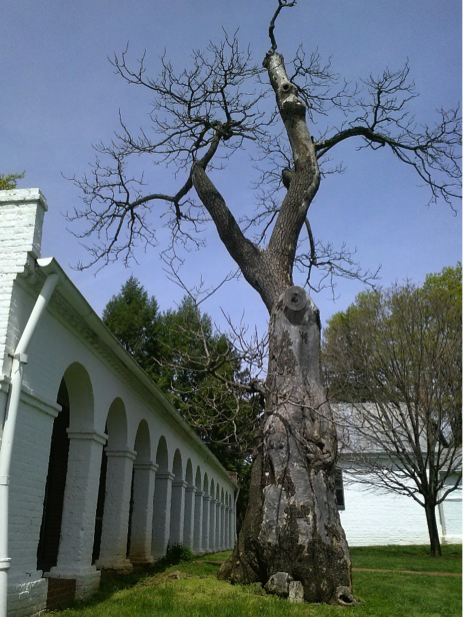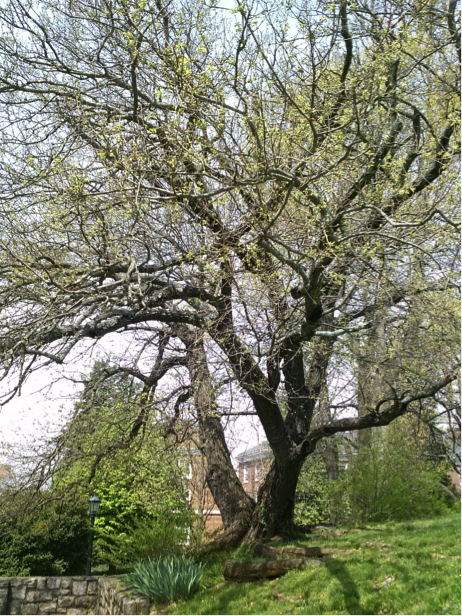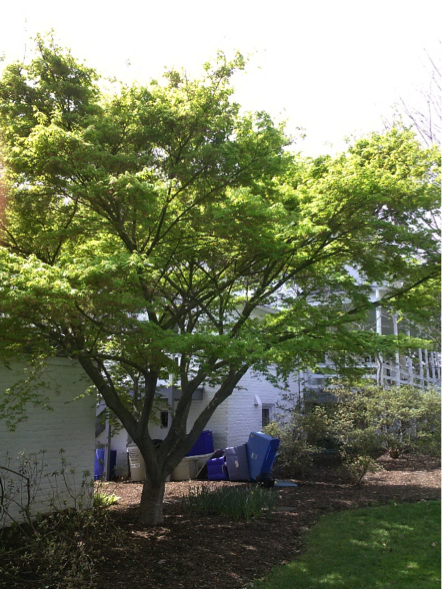After months of trudging through surprise cold fronts and freak snowstorms, springtime at the University of Virginia is a relief. Students flock to the lawn to study and sunbathe, and I go outside to read under my favorite trees. Everyone has their favorite study spots, and one of mine is under a Loebner magnolia at Brown College on Monroe Hill. The tree blooms beautifully in the early spring, producing white flowers with hundreds of petals that fall gently whenever a breeze hits its branches.
I studied under the magnolia for two years before taking notice of a small plaque on the back of a nearby bench, dedicating the tree to Angela A. Qazi, a former resident of Brown College who died while she was a student at the University. It was then I began to take an interest in the trees planted around Monroe Hill, and by the beginning of my third year I was one of four students working on a Brown Residential College tree labeling project.

Before discussing the many unique and beautiful trees located on Monroe Hill, it is important to understand the area’s history. In 1788, James Monroe bought 800 acres on which he constructed his law office and house, land that belongs to the university today. Of course, the university was not founded until 1819, at which point Monroe had already sold the land and everything on it. Today, the hill on which the law office stands is known as Monroe Hill, part of Brown Residential College which was established in 1986. The Monroe Hill House—not to be mistaken with Monroe’s actual house which stands adjacent to the Hill House and law office—is the residence of Brown College’s principal and their family.
The landscape around Brown is similar to that of the Lawn, since both areas grew up together. Unlike other areas around Grounds where trees tend to be chosen from a select few species for landscaping purposes, and planted at the same time after the establishment of new buildings, people have been planting trees around Brown for over two hundred years, and almost every tree planted on Monroe Hill has a story.
When establishing the Brown Residential College tree labeling project, we had two goals in mind: 1) provide plaques on certain trees consisting of the tree’s common and scientific names in order to increase students’ knowledge of the species they see every day, and 2) learn each tree’s unique history. The first goal was quite simple with the assistance of Brown fellows John Sauer—master gardener for Carr’s Hill—Cathy Clary, and Sue Plaskon, who identified trees that have aesthetic, ecological, and historical value.
Two trees which deserve mentioning here are the Princess Tree and the Mulberry. The Princess Tree or Paulownia tomentosa is located directly adjacent to the law office on Monroe Hill, and is quite possibly older than the building itself. The Mulberry is also located on the Hill, and has a magnificent, gnarly root system that can be seen above ground.


The second goal—to learn the trees’ unique histories—was a bit more difficult, but our job was made easier by UVA’s memorial tree website. As it turns out, Monroe Hill is home to a number of officially designated trees and private commemorative trees, which partially explains the smorgasbord of species found in the area. The website contains information on when the tree was planted, the species, the individual it commemorates, and also provides a map showing the location of all the designated and commemorative trees on Grounds.
The trees located on and around Monroe Hill planted for outstanding members of our community include:
–Black Walnut for James Monroe
–Yoshino Cherry for Carl Trindle,
–Merrill Magnolia for Angela A. Qazi
–Sugar Maple for Thalia Vassilatos
–Red Horsechestnut for Laura Sue Sherman
–Amu Cork Tree for Paul G. Adams IV
As we continue to work on the tree labeling project, with the goal of labeling twenty more trees to add to the ten already labeled, we have learned more and more of the stories behind the trees around Brown. My personal favorite—which I learned only the other day as I toured the area looking at twenty new trees to be labeled with Cathy Clary—is the story of the “Wedding Tree” a fantastic Japanese Maple that was planted in secret by a former Brown president for his wife upon their marriage.

Although I am graduating this year, the tree labeling project is now supported by the Brown Residential College community, and will continue for years to come. We are currently working on adding a page to the Brown College website with information on all the labeled trees, providing a map so students can lead their own walking tours. The University of Virginia is one of the most beautiful universities in the United States, and it seems only fair that the trees that make it so beautiful are recognized by name and allowed to tell their stories.
Post by Helen Mittmann, Fourth-Year, Anthropology